Effects of Atrazine exposure on human bone marrow-derived mesenchymal stromal cells assessed by combinatorial assay matrix
- PMID: 37588595
- PMCID: PMC10426140
- DOI: 10.3389/fimmu.2023.1214098
Effects of Atrazine exposure on human bone marrow-derived mesenchymal stromal cells assessed by combinatorial assay matrix
Abstract
Introduction: Mesenchymal Stromal/Stem cells (MSCs) are an essential component of the regenerative and immunoregulatory stem cell compartment of the human body and thus of major importance in human physiology. The MSCs elicit their beneficial properties through a multitude of complementary mechanisms, which makes it challenging to assess their phenotype and function in environmental toxicity screening. We here employed the novel combinatorial assays matrix approach/technology to profile the MSC response to the herbicide Atrazine, which is a common environmental xenobiotic, that is in widespread agricultural use in the US and other countries, but banned in the EU. Our here presented approach is representative for screening the impact of environmental xenobiotics and toxins on MSCs as an essential representative component of human physiology and well-being.
Methods: We here employed the combinatorial assay matrix approach, including a panel of well standardized assays, such as flow cytometry, multiplex secretome analysis, and metabolic assays, to define the phenotype and functionality of human-donor-derived primary MSCs exposed to the representative xenobiotic Atrazine. This assay matrix approach is now also endorsed for characterization of cell therapies by leading regulatory agencies, such as FDA and EMA.
Results: Our results show that the exposure to Atrazine modulates the metabolic activity, size, and granularity of MSCs in a dose and time dependent manner. Intriguingly, Atrazine exposure leads to a broad modulation of the MSCs secretome (both upregulation and downmodulation of certain factors) with the identification of Interleukin-8 as the topmost upregulated representative secretory molecule. Interestingly, Atrazine attenuates IFNγ-induced upregulation of MHC-class-II, but not MHC-class-I, and early phosphorylation signals on MSCs. Furthermore, Atrazine exposure attenuates IFNγ responsive secretome of MSCs. Mechanistic knockdown analysis identified that the Atrazine-induced effector molecule Interleukin-8 affects only certain but not all the related angiogenic secretome of MSCs.
Discussion: The here described Combinatorial Assay Matrix Technology identified that Atrazine affects both the innate/resting and cytokine-induced/stimulated assay matrix functionality of human MSCs, as identified through the modulation of selective, but not all effector molecules, thus vouching for the great usefulness of this approach to study the impact of xenobiotics on this important human cellular subset involved in the regenerative healing responses in humans.
Keywords: cellular phenotype and function; combinatorial assay matrix technology; environmental herbicide atrazine; immunomodulation and regeneration; mesenchymal stromal/stem cells (MSCs).
Copyright © 2023 Uwazie, Pirlot, Faircloth, Patel, Parr, Zastre, Hematti, Moll, Rajan and Chinnadurai.
Conflict of interest statement
The authors declare that the research was conducted in the absence of any commercial or financial relationships that could be construed as a potential conflict of interest.
Figures
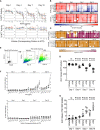
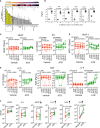
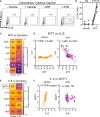
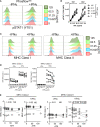
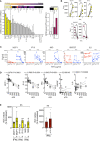

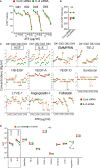
Similar articles
-
Lysis and phenotypic modulation of mesenchymal stromal cells upon blood contact triggers anti-inflammatory skewing of the peripheral innate immune repertoire.Cytotherapy. 2023 Sep;25(9):956-966. doi: 10.1016/j.jcyt.2023.05.009. Epub 2023 Jun 22. Cytotherapy. 2023. PMID: 37354149
-
Effect of inflammatory environment on equine bone marrow derived mesenchymal stem cells immunogenicity and immunomodulatory properties.Vet Immunol Immunopathol. 2016 Mar;171:57-65. doi: 10.1016/j.vetimm.2016.02.007. Epub 2016 Feb 12. Vet Immunol Immunopathol. 2016. PMID: 26964718
-
Potency Analysis of Mesenchymal Stromal Cells Using a Combinatorial Assay Matrix Approach.Cell Rep. 2018 Feb 27;22(9):2504-2517. doi: 10.1016/j.celrep.2018.02.013. Cell Rep. 2018. PMID: 29490284 Free PMC article.
-
Immunosuppressive properties of mesenchymal stem cells: advances and applications.Curr Mol Med. 2012 Jun;12(5):574-91. doi: 10.2174/156652412800619950. Curr Mol Med. 2012. PMID: 22515979 Review.
-
Adipose Tissue-Derived Mesenchymal Stem/Stromal Cells and Their Contribution to Angiogenic Processes in Tissue Regeneration.Int J Mol Sci. 2022 Feb 22;23(5):2425. doi: 10.3390/ijms23052425. Int J Mol Sci. 2022. PMID: 35269568 Free PMC article. Review.
Cited by
-
Occupational exposure to pesticides dysregulates systemic Th1/Th2/Th17 cytokines and correlates with poor clinical outcomes in breast cancer patients.Front Immunol. 2023 Oct 24;14:1281056. doi: 10.3389/fimmu.2023.1281056. eCollection 2023. Front Immunol. 2023. PMID: 37942322 Free PMC article.
-
Unlocking the Therapeutic Potential of Adipose-Derived Stem Cell Secretome in Oral and Maxillofacial Medicine: A Composition-Based Perspective.Biology (Basel). 2024 Dec 5;13(12):1016. doi: 10.3390/biology13121016. Biology (Basel). 2024. PMID: 39765683 Free PMC article. Review.
References
Publication types
MeSH terms
Substances
LinkOut - more resources
Full Text Sources
Research Materials

